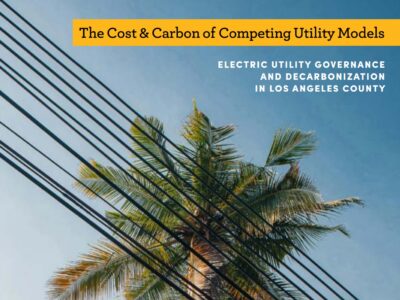Does the Law Require Cost-Benefit Analysis?
According to the D.C. Circuit, the answer is no.
Supporters of cost-benefit analysis have argued that agencies have a duty to follow cost-benefit analysis in their decisions. Agencies routinely perform cost-benefit analysis of proposed regulations, because presidential orders have long required them to do so. And the White House may also pressure them to make their decisions accordingly. But in the D.C. Circuit, anyway, the rule seems to be clear that there is no legal mandate to conform their decisions to economic analysis.
The D.C. Circuit confirmed this view in a case decided just over a week ago, Center for Biological Diversity v. EPA. The case involved biofuels. EPA sets the volume of biofuels that refineries must include in their mix based on six factors. The dissent by Judge Katsas summarized the factors as “(1) environmental impacts, including climate change, (2) energy security, (3) production of renewable fuels, (4) infrastructure, (5) costs, including fuel and food costs, and (6) other factors.”
Like the environmental plaintiff, Judge Katsas considered EPA’s final decision plainly unreasonable. Judge Katsas reported EPA’s estimate showed that its rule would “cost consumers at least $41 billion over three years: $23.8 billion in increased fuel costs and $17.2 billion in increased food costs.” It would also cause a variety of negative environmental impacts (basically by increasing corn acreage for ethanol. The climate benefits of the rule were highly uncertainty because there is controversy over whether using corn ethanol ultimately reduces emissions of greenhouse gases. According to Judge Katsas, “One need hardly be a trained economist to discern that, in any apples-to-apples comparison over comparable timeframes, EPA’s own analysis would show costs dwarfing benefits, even 10 accounting for the climate.”
The majority rejected the demand for a head-to-head comparison of costs and benefits. It said, “Nothing in the Act or precedent supports a freestanding requirement that EPA balance the quantifiable costs and benefits of the volumes it sets, let alone that EPA may implement the RFS Program only insofar as its benefits— quantified or not—outweigh its costs.” The statutory language was controlling: ““the statute does not state what weight should be accorded to the relevant factors,” and so “we give EPA considerable discretion to weigh and balance the various factors required by statute.”
Thus, in the majority’s view:
“Thus, contrary to the Environmental Petitioners’ and the partial dissent’s assertion, it does not matter that the monetized benefits of the Rule may be less than its monetized costs. What matters is whether EPA acted in a reasonable, non-arbitrary manner in setting volumes based on its review of the prior implementation of the program and its consideration of the statutorily required factors. EPA did so. Its decision to set the challenged volumes was reasonable and reasonably explained.”
Many environmentalists would agree with the dissent that the negatives of the biofuel program clearly outweigh the positives. Nearly all U.S. biofuels come in the form of corn ethanol, which turns out to be a dubious way of combatting climate change. Cellulosic biofuels would be environmentally appealing, but no one has figured out an affordable technology for making them. In short, biofuels seem like a failed experiment.
Quite possibly, EPA thinks so too. Yet statute is clearly designed to encourage biofuels. And corn ethanol is politically untouchable. If EPA eliminated it or even seriously cut the required volume, a flock of Midwestern Senators would descend on it in a frenzy.
Putting aside the particulars of the case, it seems wrong to apply the same standard (monetized cost-benefit analysis) to every provision in environmental law. These provisions have different language, reflecting differences in congressional priorities. Some provisions, for instance, may be designed push industry to find innovative solutions; others may reflect Congress’s value judgments or a desire to limit EPA’s discretion. We shouldn’t assume that the myriad differences in statutory language are irrelevant and that Congress wanted agencies to adopt the same method of making decisions in every case.
It may well be that some of Congress’s regulatory initiatives were misguided. The renewable fuels provision may be one of them. But an agency’s job should be to implement congressional mandates, not second-guess their wisdom — and still less delegate the job of assessing the wisdom of laws to staff economists.
Reader Comments
One Reply to “Does the Law Require Cost-Benefit Analysis?”
Comments are closed.






The phrase “economically feasible” shows up twice in the Fiscal Responsibility Act of 2023 amendments to NEPA. First, in Section 102(2)(C)(iii) and second in Section 102(2)(F). How are we to determine if a proposed action is “economically feasible” without a cost-benefit analysis? Oh, wait, I know, it will be decreed to be economically feasible without any factual analysis.